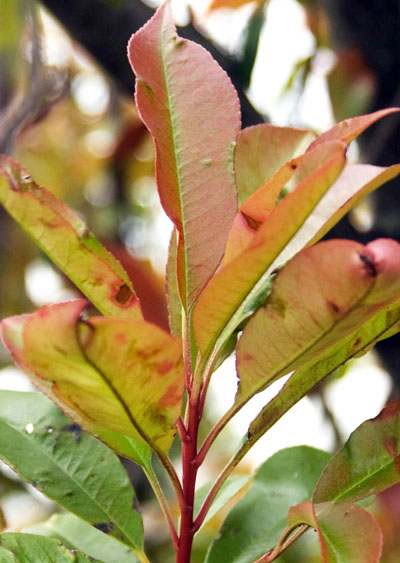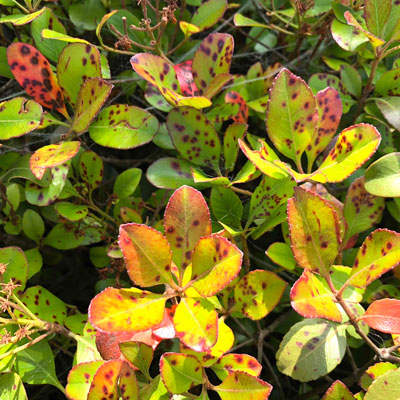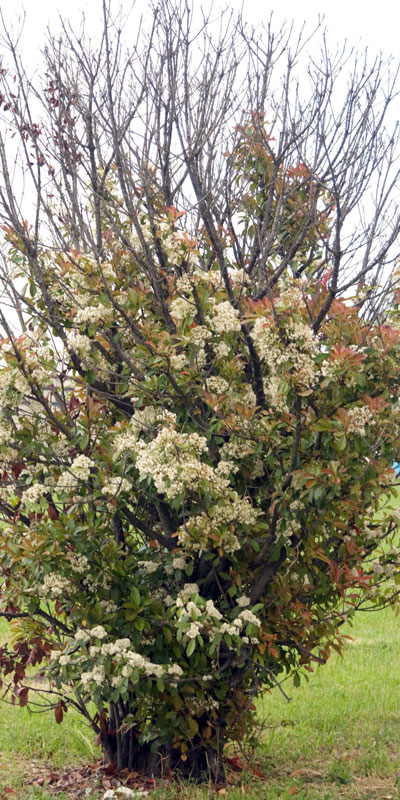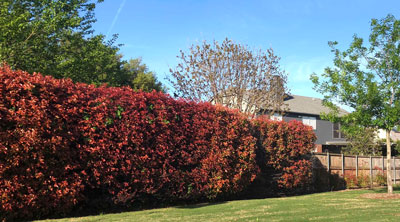Question of the Week: April 15, 2021

“What is wrong with my redtip photinias? I really need them to screen my property. What can I do to save them?”
You’re seeing Entomosporium fungal leaf spot, and it has ravaged photinias from coast to coast and clear across the South as well. So much so that landscape professionals do not use this shrub in their designs any longer.
The problem is that there is no effective preventive treatment, nor is there a cure. And plant breeders haven’t come up with a resistant selection. We’re just kinda stuck with this disease and with no way around it but to bypass it by planting something else.

Sadly, Entomosporium has now moved over to the closely related Indian hawthorns. It was in the process of taking them down when the Great Freeze of February did the job for it.

Progression of the disease…
The first thing you’ll see will be maroon-colored freckles dotting the leaves. They seem harmless enough that first year, but then you begin to notice the leaves losing their color and even puckering as the spots become much more common. The twigs and even branches die out and eventually entire plants are lost out of long rows.

The temptation when all of that happens is to replace those lost plants with more redtip photinias, but we’ve discovered that that would be folly. New plants soon develop the disease, too, and you’re right back where you started. And, as mentioned, there is no prevention or cure for this particularly troublesome malady.
Your best replacements for tall, screening shrubs would be Nellie R. Stevens hollies, Needlepoint hollies or Oakland hollies.
